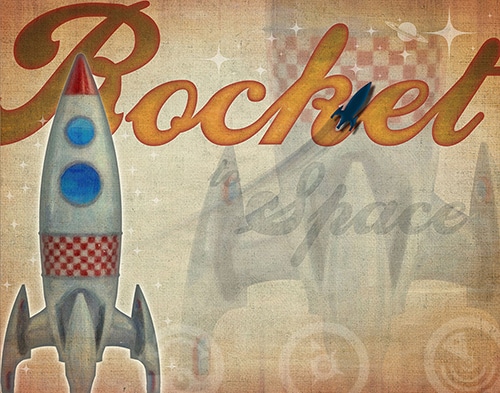
Our world moves so quickly these days, and we’re all pedaling faster and faster just to keep up. That’s certainly true at CHF, where the pace of change continues to be intense. (Those of you who know me will not be surprised by that, haha!) We have just completed our 2016 annual report—which you can read here—and are now deep into strategic-planning discussions, as are our Accelerator Fellows, who are working hard to develop Investment-Grade Proposals for their individual businesses. In the midst of all this, I am taking a brief moment to reflect.
Stepping back to reflect right now might seem misguided, or like an indulgence, but it is actually a necessity. If you just keep moving at breakneck speeds, you will surely tumble over a cliff or drive into a tree or run over a pedestrian. Leaving aside the potential for direct injury to you and collateral damage, there is the near certainty that you will not end up where you really need to be. Periodic assessments are absolutely crucial to make sure you’re still on track toward your goals, that those goals remain relevant, and that you can pivot to adapt to changing conditions.
As a business strategist, I preach regularly scheduled reflection to everyone. Some resist it. They say, “You’ve given me a strategy, so now I’m set.” Those people miss the point entirely. It’s not like you bought a refrigerator, and now you don’t need another one for 20 years. You always need strategy because conditions are always changing, and so are you. You don’t necessarily need a new strategy; rather, the one you’ve got must continually evolve.
A Very Big, Half-Full Glass
Today we interact in completely different ways than we did ten or even five years ago. This is a time of immense change, and the pace keeps quickening. Change is hard, but it’s harder for some than for others. It’s hardest for skill-masters, those who are experts at certain specific ways of doing things. When new methods are introduced (Internet, anyone?), the value of these people plummets because it is tied to obsolete activities and knowledge. They now have to scramble to master new skills, so they can continue to earn their living as experts. And, they must do this every time a new method comes along. That is tough, yes.
Conversely, change is easiest for people whose stock-in-trade is thinking, inventing, and expressing. This crowd naturally reaches for and exploits new things. Anything that helps them create, build, communicate—you get it—is useful. When the time comes to implement new approaches, they have a natural advantage.
So, artists should find this moment exhilarating! The ways in which art is traded, bought, sold, acquired, shipped, displayed, and promoted are all changing dramatically and at lightning speed, and you are well-positioned to take charge. Everyone is adapting and learning how to maneuver through this brave new world, and how to make use of these new methods. You no longer need to rely on those who are expert at now-antiquated ways of doing things; they are learning, too. Instead, why not take the reins yourself and hand back the tasks while keeping the control?
Of course, you still need strategy…
And Now for an Analogy
Annabelle walks into a candy store. She’s there to get some salted caramels for her Aunt Betty’s birthday and pick up a few pieces of licorice as a treat for herself, but as soon as she steps inside, she is undone by the sheer volume of choices. It’s only when she’s halfway to the birthday party, with a now nearly empty bag of sour gummies, lollipops, and the candy corn that the shop owner had set out near the register in hopes of enticing an impulse buy that she realizes she has failed to accomplish her mission. She has no licorice (which she definitely no longer needs or wants), and is now on her way to the celebration without a present.
For artists, today’s art industry is like that candy store. Yes, there are all kinds of newfangled methods to be mastered, but you need not be daunted by the possibilities arrayed before you. You should be excited about all that candy. I mean, wow, look at the options! But you also need to enter the store with a game plan and stick to it, or you might gorge yourselves until you’re sick, and not even get what you need. Don’t be the kid in the candy store; be the kid’s mom. Remember your goal.
Chop, Chop!
“Sometimes the fastest way to get there is to go slow.” —Count To Ten by Tina Dico
So, I recommend taking a moment to reflect. Just back up and ask yourself some strategic questions: “What am I trying to accomplish as an artist over the next two years? Ten? Forty? What business objectives can I pursue to get me where I want to go in my practice? In my career? In my life? How can I break down those objectives into tangible activities that ensure I make progress? Of the things I’ve been doing, what should I continue to do, and what no longer makes sense?”
Now, survey the landscape—existing conditions, and the different methods for operating within them: social-media channels, ways to sell work online, wholesale and retail sales opportunities, licensing and copyright protections, etc. Which ones make sense for you, given your goals? Please only evaluate right now based on usefulness—don’t think about what you know how to do, or what scares you. I’m not telling you to learn how to use Buffer or build a web 2.0 site or update QuickBooks. Don’t worry about HOW all of these things work; just make sure you understand WHAT is contained in the current universe of options (does this store even sell licorice?).
Once you have a top-level handle on it, then decide which ones appeal to you, which ones make you queasy, and which ones would be the most effective in helping you reach your goals, even if they make you queasy. Maybe art fairs are the way to go, maybe not ever. Maybe Etsy is for you, maybe it’s not.
You have now set yourself up to build and implement a strategy! You know what you want to accomplish, the cutting-edge ways to do it, and which ones of those make sense for you to employ. Remember, it doesn’t have to be you, personally, who updates your CRM with the contact information of all the people you met at the gallery opening last week, or who regularly posts images on Tumblr. It might be you who does these things, because you enjoy doing them (and would rather farm out other tasks instead), or because you are not yet at a point in your career where you can delegate such things to others. Maybe one of your objectives is to get to the point where you can hire skill-masters to perform these activities for you—under your management!
And that’s the ultimate point: only YOU can figure out what you want and how to attain it. Skill-masters can take care of the details, but they should be slaves to your vision, not the other way around. So treat yourself to your favorite kind of candy, and take a moment to reflect.








Thank you Elizabeth from one of the current fellows for writing this encouraging piece. I need to keep hearing and value what you wrote as Director of CHF. My continued goal is to be the finest artist I can be and be professionaly recognized as well as fairly compensated financially. The BAP is truly supporting a deeper effort in me to keep evolving in this direction. Peter Scaturro
Thank you, Peter!!